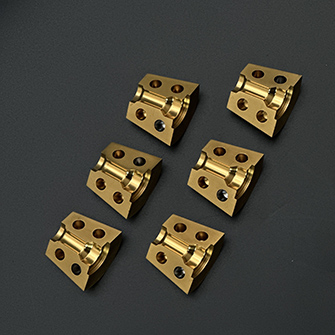Three-Piece Collapsible Mold: Design, Applications, and Maintenance
What is a Three-Piece Collapsible Mold?
A Three-Piece Collapsible Mold is a specialized tooling system designed for manufacturing complex geometries with undercuts or intricate internal features. This mold type consists of three primary components: the core, cavity, and collapsible segments, which work in unison to create molded parts that would be impossible to eject from traditional two-piece molds.

Key Characteristics with Technical Data
Precision Alignment: Features dowel pins with ±0.005mm tolerance for perfect component registration
Thermal Stability: Constructed from P20 or H13 tool steel with HRC 28-32 hardness for minimal thermal expansion
Cycle Efficiency: Collapsible mechanism enables 15-30% faster cycle times compared to complex slide systems
Surface Finish: Capable of achieving SPI-A1 (0.012μm Ra) mirror finishes when polished
Operating Pressure: Designed to withstand 150-200 MPa injection pressures
Undercut Capacity: Can accommodate undercuts up to 15° draft angle in most applications
Applications Across Industries
1. Medical Device Manufacturing
Three-piece Collapsible Molds excel in producing ISO 13485-compliant medical components with complex internal geometries. Typical applications include:
Drug delivery system components with internal helical channels
Surgical instrument housings requiring 0.1mm wall thickness consistency
Implant trial components with biomimetic surface textures
2. Automotive Components
The automotive sector utilizes these molds for:
HVAC system ducts with 3D contoured internal baffles
Fuel system components meeting SAE J2044 permeability standards
Lightweight structural elements with 40% glass-filled nylon composites
3. Consumer Electronics
Critical for manufacturing:
Waterproof enclosures with IP68-rated sealing features
Hinged assemblies molded as single pieces
Thermal management components with 0.5mm cooling fin spacing
4. Aerospace Applications
Used for producing:
Cabin interior components meeting FAR 25.853 flammability requirements
Radome prototypes with 2.2 Dk dielectric constant materials
Conformal cooling channels for RTM (resin transfer molding) processes
Comprehensive Maintenance Protocol
Daily Maintenance
Inspect all guide pins and bushings for wear exceeding 0.02mm
Verify proper function of ejection system with 0.1mm feeler gauge checks
Clean mold surfaces with pH-neutral solvents only
Weekly Procedures
Measure core/cavity alignment with dial indicators (tolerance: ±0.015mm)
Lubricate all moving components with high-temperature synthetic grease
Inspect cooling channels for scale buildup using borescopes
Monthly Maintenance
Perform hardness testing on critical surfaces (minimum HRC 28)
Check all hydraulic/pneumatic connections at 150% operating pressure
Document wear patterns using 3D scanning for predictive maintenance
Annual Overhaul
Disassemble entire mold for EDM inspection of hidden surfaces
Replate critical components to restore 4-8μm chrome layer
Recertify mold to original CAD specifications with CMM verification
Operational Best Practices
To maximize mold lifespan and performance:
Maintain 50-80°C mold temperature during standby
Implement automated vision systems for ejection monitoring
Use conformal cooling circuits to minimize thermal stress
Store molds in 40% RH controlled environments with VCI protection
Document every 50,000 cycles with detailed wear analysis











